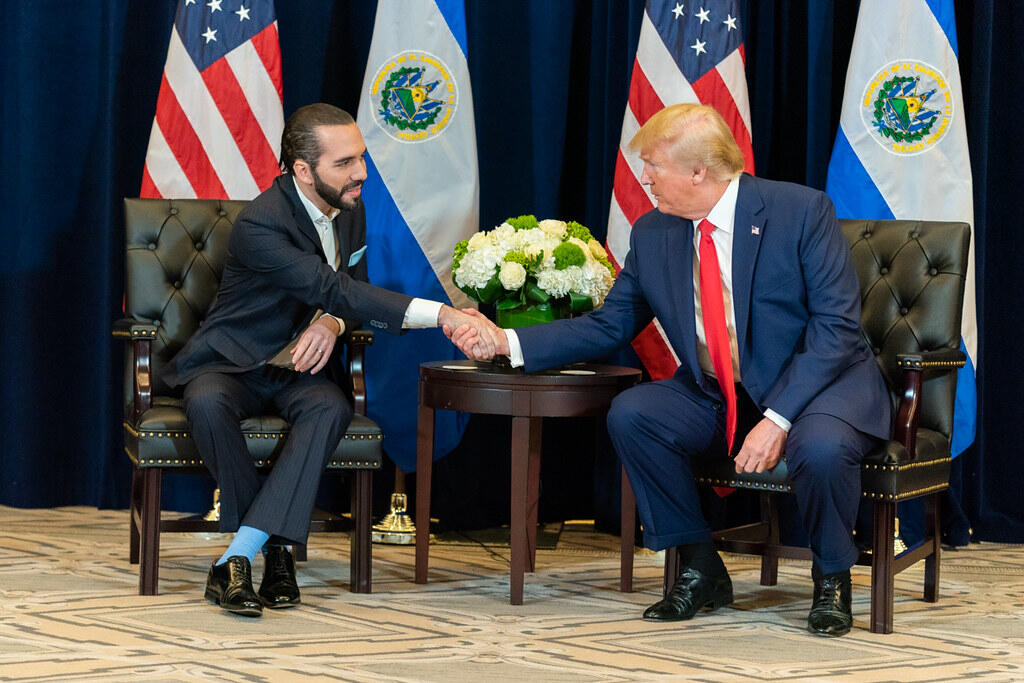The cryptocurrency landscape is undergoing a significant transformation in 2024, reaching record highs in October following the election of Donald Trump, as the President-elect claimed he would make the United States the “crypto capital of the planet”.
As Bitcoin hype escalates and cryptocurrencies continue their path to wider acceptance, we take a look at some of the evolving government regulations, innovative blockchain technologies, and developments of central bank digital currencies (CBDCs).
Government Regulations: Shaping the Crypto Landscape
Government policies and regulations have been instrumental in defining the operational boundaries and legitimacy of cryptocurrencies.
One of the most notable examples is El Salvador, which in 2021 became the first country to adopt Bitcoin as a legal tender. This bold move was aimed at enhancing financial inclusion, reducing reliance on the U.S. dollar, and attracting foreign investment.
El Salvador currently holds 5,959 BTC, worth approximately US$581 million (A$913.5 million), as part of its broader economic strategy to boost tourism and provide financial inclusion to its unbanked population.

In contrast, other countries have opted for caution. During the Biden administration, the U.S. regulatory environment for cryptocurrencies was characterised by a cautious yet evolving approach.
The Securities and Exchange Commission (SEC) played a crucial role in clarifying what constitutes a security, which had profound implications for initial coin offerings (ICOs) and other crypto-related activities.
However, President-elect Donald Trump has made two significant appointments as he prepares to return to the White House in January, signaling a potential shift in the government's approach to technology and financial regulation.
AI and Crypto Czar Appointment
Trump announced on Truth Social that David Sacks, a former PayPal senior executive, will serve as the "White House A.I. and Crypto Czar".
In this newly created role, Sacks will be responsible for guiding policy in artificial intelligence and cryptocurrency, which Trump described as "two areas critical to the future of American competitiveness".
Sacks, a venture capitalist and podcaster, is known for his tech industry experience and connections. He is a close friend of Tesla CEO Elon Musk and has been an early investor in various tech ventures.

In a separate announcement, Trump revealed his intention to nominate Paul Atkins as the next chairman of the Securities and Exchange Commission (SEC). Atkins, a former SEC commissioner, is currently the CEO of Patomak Global Partners, a consulting firm specialising in financial services and cryptocurrency.
Trump praised Atkins as a "proven leader for common sense regulations" and noted his recognition of the importance of digital assets in strengthening the American economy.
Exchange-Traded Funds (ETFs): Mainstreaming Crypto Investment
The approval of Bitcoin ETFs by regulatory bodies such as the SEC has been a significant milestone in the mainstreaming of crypto investment. In January 2024, the SEC opened the door for Bitcoin exchange-traded funds to hit the mainstream, allowing traditional financial institutions to buy into crypto.
Goldman Sachs made its debut in the spot Bitcoin ETF market in the second quarter of 2024, purchasing $418 million worth of Bitcoin funds. This move, along with similar actions by other financial institutions, has increased institutional investment in cryptocurrencies, a crucial step towards broader acceptance and potential regulation.
Goldman Sachs' biggest position is a $238 million ownership in shares of BlackRock’s iShares Bitcoin Trust. The bank also owns shares in spot funds from Grayscale, Invesco, Fidelity, and others.
Morgan Stanley, another major player, has given the green light to its 15,000 financial advisors to start pitching clients on Bitcoin ETFs, specifically those issued by BlackRock and Fidelity.
However, Morgan Stanley trimmed its position in spot Bitcoin ETFs to around $189 million from roughly $270 million, primarily due to sales of its shares in the Grayscale Bitcoin Trust.
Blockchain Innovations: Enhancing Security and Efficiency
Blockchain technology, the foundational element of cryptocurrencies, continues to evolve and expand its applications, with Goldman Sachs at the forefront of integrating blockchain technology into its operations, exploring the establishment of a standalone blockchain entity focused on digital assets.
This integration signals a significant shift in how traditional financial institutions view and interact with the crypto market, leading to more robust and secure trading platforms and further legitimising cryptocurrencies as viable investment options.
The Society for Worldwide Interbank Financial Telecommunication (SWIFT) has also announced live trials for digital asset transactions starting in 2025. These trials aim to enhance the efficiency and security of cross-border transactions, which could have far-reaching implications for the global financial system.
Central Bank Digital Currencies (CBDCs): The Future of Digital Money
CBDCs represent a new frontier in digital money, issued and regulated by central banks. Australia has outlined a three-year roadmap for the development and potential implementation of a CBDC, which includes extensive research and consultation with various stakeholders to ensure that any CBDC aligns with the country's financial stability and regulatory goals.
The Reserve Bank of Australia's approach to CBDCs is cautious yet forward-looking, reflecting the broader trend among central banks to explore the benefits and challenges of digital currencies.
The Bank of England has also been advocating for a digital currency, with Governor Andrew Bailey emphasising that banks must improve their digital offerings to remain competitive.
The development of CBDCs by central banks around the world could either complement or compete with existing cryptocurrencies, but it is likely that CBDCs will coexist with cryptocurrencies, each serving different purposes within the financial ecosystem.
Institutional Investment in Cryptocurrencies
The increasing institutional investment in cryptocurrencies is a significant indicator of the sector's maturation. MicroStrategy leads the corporate Bitcoin race with 423,650 BTC, valued at over $19 billion.
Under Chairman Michael Saylor, the company has made Bitcoin a core part of its treasury strategy, viewing it as digital gold and a hedge against inflation. This aggressive accumulation has positioned MicroStrategy not only as a business intelligence software firm but also as a Bitcoin pioneer.

Other key players include Tesla, which holds 9,720 BTC, worth over $948 million, and Block, Inc. (formerly Square), which holds 8,363 BTC.
These companies are not only investing in Bitcoin but also facilitating client exposure to crypto assets through various products and services. Smaller firms like Bitcoin Group SE and BitFarms have also leveraged Bitcoin to gain significant value relative to their market caps.
Hedge Funds and Crypto ETFs
Hedge funds are taking a more aggressive approach to investing in cryptocurrencies. Millennium Management, which oversees $62 billion, now holds over $1.1 billion worth of shares in at least five Bitcoin ETFs and is the single largest holder of shares in BlackRock’s bitcoin fund.
Capula Investment Management, one of the top hedge funds in Europe with $30 billion under management, disclosed in a recent SEC filing that it holds more than $464 million in spot Bitcoin ETFs, including funds offered by BlackRock and Fidelity.
The inflows into spot Bitcoin funds have been substantial, with net flows of around $17.5 billion since their launch in January, bringing total assets in the funds to $53.5 billion as of mid-August.
Spot ether ETFs hold more than $7.6 billion, indicating a growing interest in Ethereum as well. Despite some volatility, the new ETF activity has helped lift Bitcoin prices, which hit a record above $73,000 in March before dropping to under $58,000, still up more than 30% for the year.
The Broader Implications
The combined efforts of governments and corporations to accumulate Bitcoin are reshaping the global financial system. Whether as a reserve asset, a hedge against inflation, or a tool for economic sovereignty, Bitcoin’s role is expanding.
Governments that fail to adopt Bitcoin risk falling behind in the digital economy, while corporations embracing Bitcoin are positioning themselves for future growth.
The interplay between public and private sector adoption could determine Bitcoin’s trajectory as a global asset. The finite supply of Bitcoin, capped at 21 million coins, ensures that early accumulation is a strategic priority.
This scarcity, combined with growing demand, could lead to a supply squeeze, driving up prices and making it more expensive for latecomers to acquire meaningful reserves.
